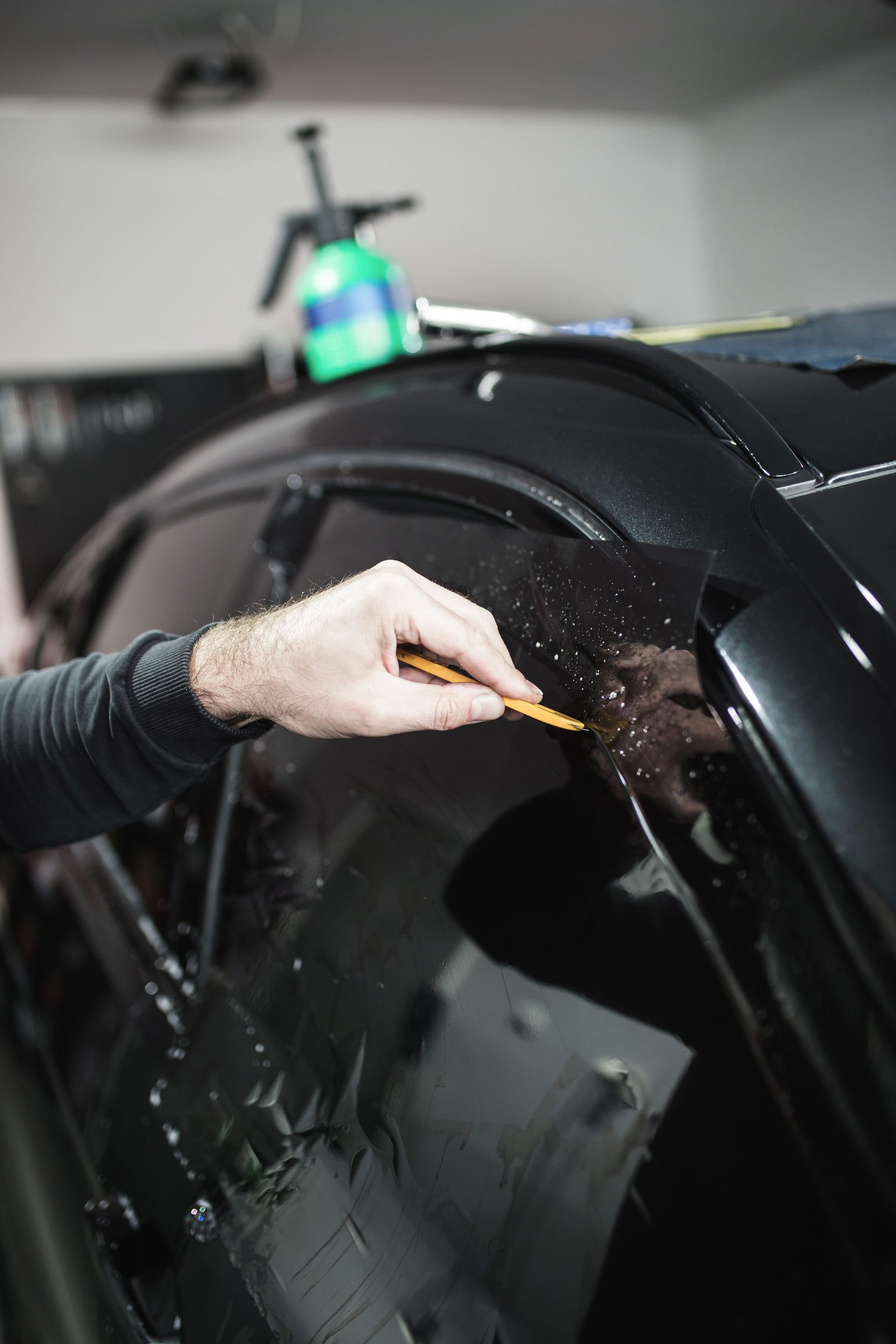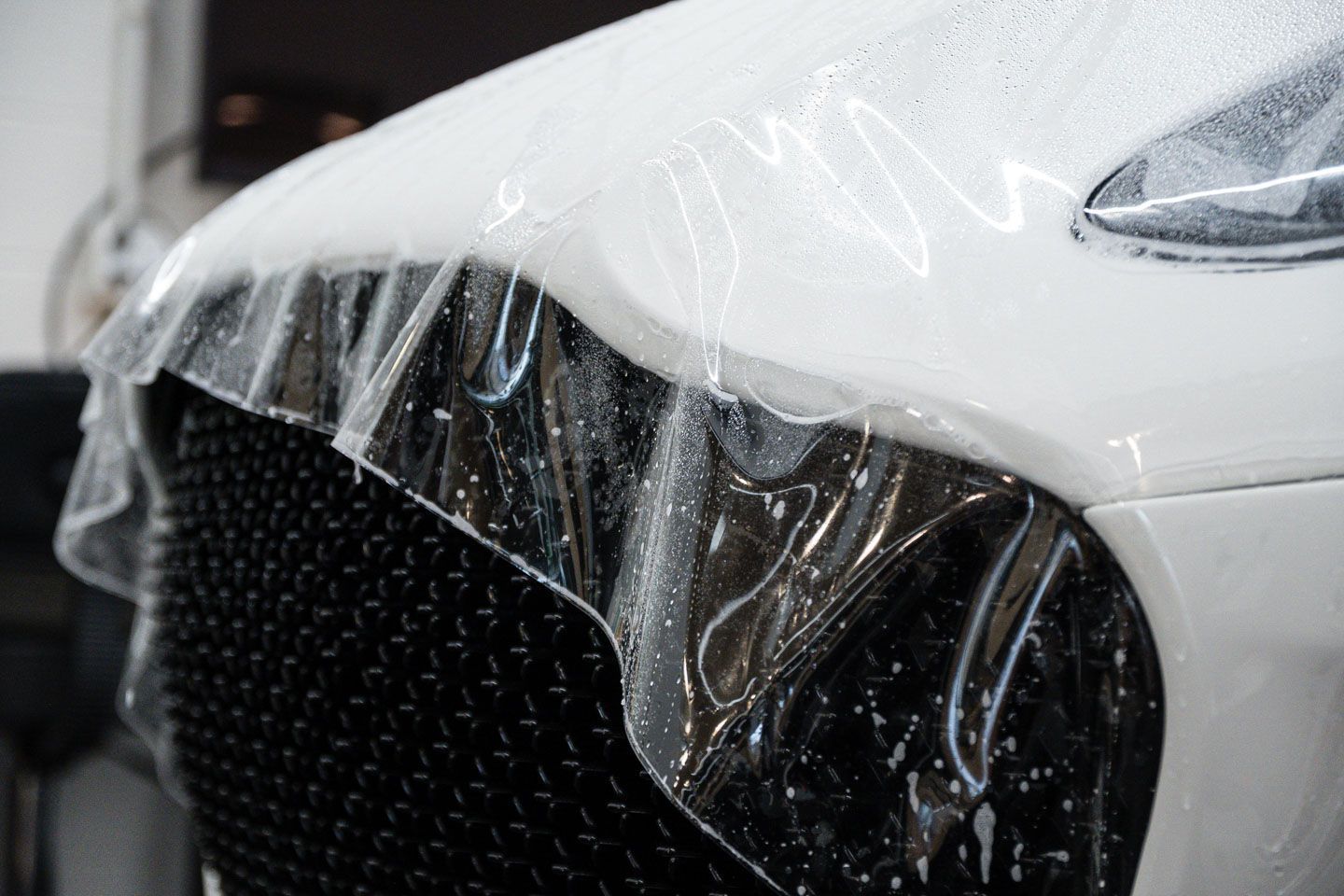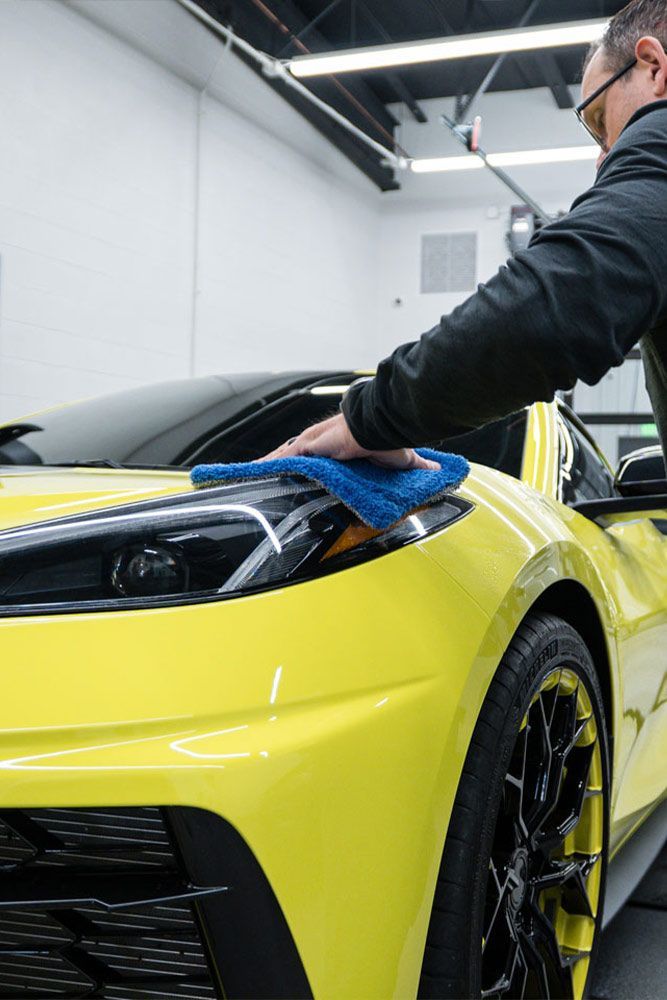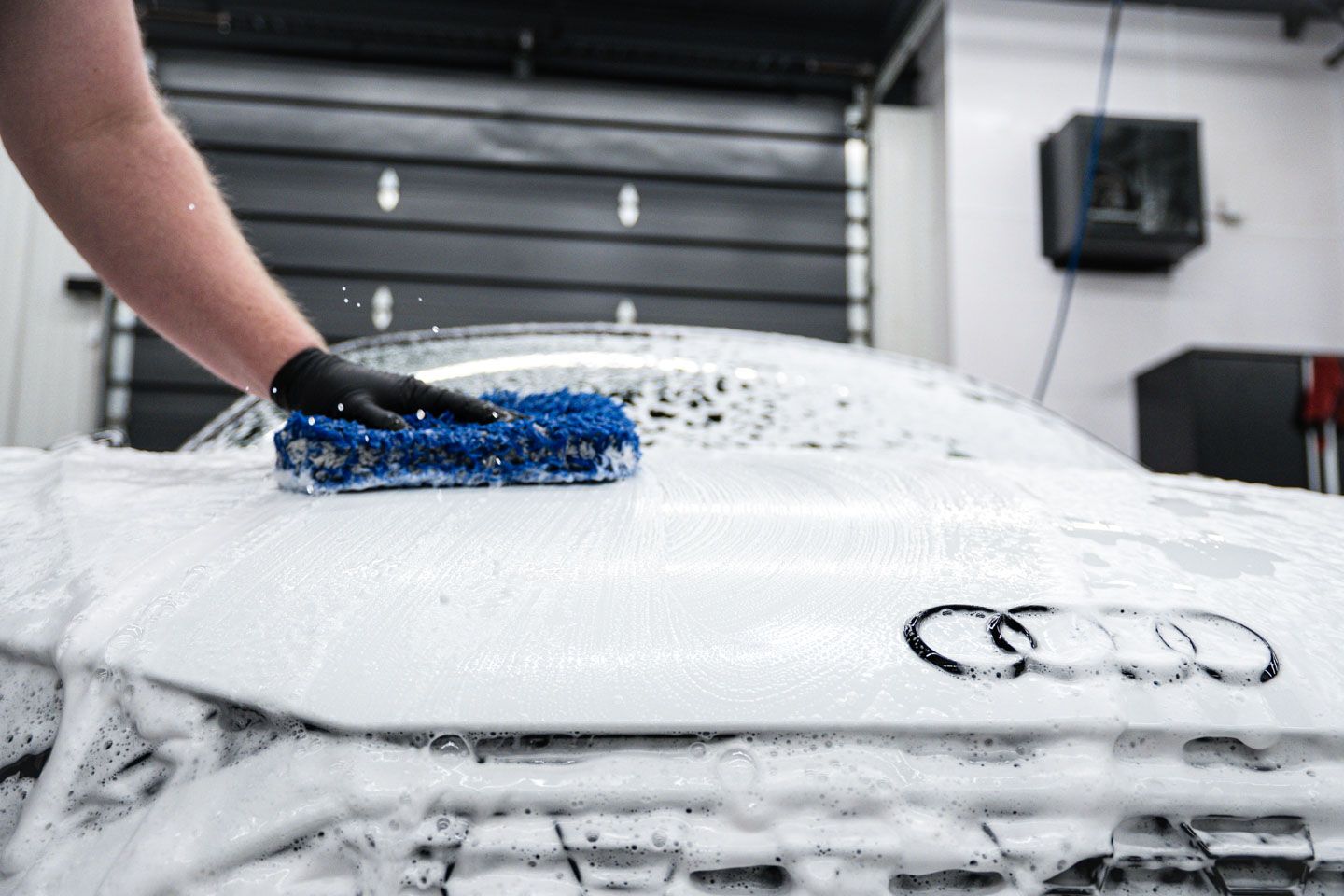Window Tinting Shades and Types: A Complete Guide to Choosing the Right One

Looking to make your ride cooler, safer, and a little more private? Window tinting might be just what you need but with so many options out there, it can get pretty confusing. From how dark the tint should be to what materials it's made of, each choice changes how well your car stays cool, protects against sun damage, or even keeps your gadgets working right. This guide breaks down everything you need to know about window tint shades and types, so you can pick the perfect fit for your style and needs.
Window tinting comes in various shades measured by Visible Light Transmission (VLT) percentages, where a lower VLT means a darker tint, and several types including dyed, metallic, and ceramic films. Choosing the right tint depends on balancing legal limits, desired heat and UV protection, aesthetic preferences, and potential signal interference with ceramic tints often being the top choice for effective heat rejection without compromising connectivity or durability.

How Window Tinting Works
Window tinting begins with a thin, almost invisible layer of material applied directly onto your vehicle's glass. The backbone of this film is polyethylene terephthalate (PET), a tough, clear polyester known for its strength and resistance to fading or peeling. This base film acts much like a canvas, on which specialized layers are built to manipulate light and heat in different ways. These layers add crucial functionality: dyes work by absorbing visible light, creating that classic dark tint many people associate with privacy and glare reduction. Metals embedded within the film act as tiny mirrors, reflecting sunlight and with it, heat back outside before it can sneak into your car. Ceramic components go even further; unlike dyes or metals, ceramics block a significant amount of infrared radiation and UV rays without sacrificing visibility or interfering with electronic signals like GPS or cell towers.
This multi-layer approach means tint isn't just about making your car look sleek, it's an engineered solution that physically alters how energy from the sun interacts with your windows.
As the sun's rays strike your tinted windows, the film's combined properties determine how much light and heat actually get inside your vehicle.
The key to comfort and protection lies in two critical functions: light rejection and heat rejection. By reducing visible light transmission through absorption or reflection, window tint helps cut down on glare that can strain your eyes while driving. Meanwhile, blocking solar infrared rays, a major contributor to heat buildup, keeps your cabin noticeably cooler during hot days. This not only improves comfort but also lessens air conditioner use, which can subtly improve fuel economy over time.
A Closer Look at Energy Blockade
| Component | Primary Function | Impact on Vehicle Interior |
|---|---|---|
| Dye Layer | Absorbs Visible Light | Reduces glare, adds darkness |
| Metallic Layer | Reflects Heat & Light | Blocks solar radiation, lowers temp |
| Ceramic Layer | Blocks IR & UV Rays | Protects upholstery, keeps cabin cool |
Among modern options, ceramic films stand out by delivering excellent heat rejection—often blocking up to 60% of infrared rays while transmitting plenty of visible light for clear visibility. This balances both safety and comfort without darkening windows excessively.
When considering tint installation at Luxury Car Care, ask specifically about these composition details. A high-quality ceramic tint might cost more upfront but will perform better in Ohio summers by drastically reducing cabin temperatures without compromising signal reception or window clarity.
With this detailed view of how tint works beneath the surface, you are well-equipped to examine the various types of window tints available, each designed to meet distinct needs and preferences as well as comply with regional laws.
Types of Automotive Tint
Different window tints are engineered to fulfill various goals from simply darkening your windows to significantly reducing heat inside your vehicle. The variety can be confusing, but understanding their core differences helps you pick what fits your lifestyle and car best.
Dyed Window Tint
Dyed window tint is often the entry-level choice, favored because it's affordable and gives your car a sleek, darker look. It relies on layers of dyed plastic to absorb sunlight rather than reflect it. This means it provides some shading but offers only minimal heat rejection, which can be a downside during scorching summer drives.
Over time, fading is inevitable, the pigment diminishes, shifting colors from deep purples to browns before eventually becoming nearly clear. Plus, this type of tint has a shorter lifespan because the dye layers break down faster when exposed to UV rays. So while its price is attractive, anyone prioritizing durability or temperature control might find dyed tints less satisfying.
Metalized Window Tint
Metalized films take a different approach by embedding microscopic metallic particles in the film. These metals act like tiny mirrors, reflecting both heat and UV rays away from your vehicle. This translates to better cooling performance compared to dyed films and improved resistance against minor scratches and fading.
However, there's a catch: those metal particles can disrupt electronic signals for things like GPS navigation, satellite radio, or your cellphone. If you depend heavily on tech in your car, this might become an annoyance.
Moreover, metalized tints tend to produce a reflective or "mirrored" finish that sometimes clashes with factory-installed privacy glass. They typically work best on cars without existing tinted windows where you want solid heat reduction but don't mind signal interference or a bolder appearance.
Carbon Window Tint
Carbon tints hit a sweet spot between performance and reliability. They use tiny carbon particles embedded in the film, which inherently block infrared light, one of the main culprits making your car interior hot and provide consistent heat rejection without fading over time since they don't rely on dyes.
Unlike metallic films, carbon doesn't cause signal issues for electronics, keeping your devices humming smoothly even with tint applied. If you want something long-lasting that improves your cabin comfort without the glossy look of metalized film, carbon is an excellent choice.
It usually costs more than dyed options but combines durability with quieter aesthetics.
Ceramic Window Tint
Ceramic tint represents top-tier window film technology today. Microscopically small ceramic particles embedded within the film block up to 99% of harmful UV rays and reduce interior temperatures by over 50%, far outperforming dyed or carbon variants in thermal control.
Unlike metalized films, ceramic coatings are non-metallic and non-conductive, so they won't interfere whatsoever with radios, GPS units, or smartphones, a major plus if you're tech-savvy.
The clarity also remains crystal clear without haze or color shifts even after years of exposure to sun and weather. Although ceramic tints carry a higher price point because of their advanced materials and installation precision required, the benefits are clear: greater comfort during hot weather, superior UV protection for you and your upholstery, and enhanced durability that keeps your investment protected longer.
Each tint type brings different strengths to the table; understanding these will help you balance cost with function so you can enjoy both comfort and style behind the wheel.
| Type | Heat Rejection | UV Protection | Signal Interference | Durability | Appearance |
|---|---|---|---|---|---|
| Dyed | Low | Minimal | None | Low (fades easily) | Matte/Dark |
| Metalized | Moderate | Moderate | Possible | High | Reflective/Shiny |
| Carbon | Good | Strong | None | High | Matte/Black |
| Ceramic | Excellent (>50%) | Excellent (up to 99%) | None | Very High | Clear & Glossy |
Choosing automotive tint isn't just about looks, it's about protecting yourself from heat and UV damage while ensuring electronics work seamlessly.
Moving from vehicles to homes, we now turn attention to how window film technologies adapt for residential spaces balancing energy efficiency with style and security needs.
Residential Window Film Options
Residential window films are a smart upgrade that goes beyond mere aesthetics. They serve multiple purposes improving energy efficiency, enhancing privacy, and adding an extra layer of security. Many homeowners don't realize that applying a thin, multi-layered film on the inside of their windows can dramatically reduce the amount of solar heat entering their homes.
This not only makes living spaces cooler but also cuts down on monthly energy bills a welcome benefit especially in hot climates.
Let's start by looking at one of the most popular styles:
Decorative Films
Decorative window films come in an array of designs that work wonders for privacy without sacrificing natural light. Whether it's frosted glass or intricate patterns, these films soften harsh sunlight and keep nosy neighbors at bay.
What sets them apart is their ability to elevate your home's interior design while maintaining openness and brightness. For instance, installing a frosted film in your bathroom can provide the needed seclusion while bathing areas stay beautifully lit throughout the day.
But if controlling temperature is your priority, then solar control films take center stage.
Solar Control Films
Designed with advanced technology, solar control films can block up to 86% of solar heat, leading some homeowners to save as much as 30% on cooling costs (source: Madico). These films combine reflective layers with absorptive materials to drastically reduce glare and UV radiation that fade furniture and flooring.
By limiting heat transfer through windows, they create a more consistent indoor climate, reducing reliance on air conditioning systems. The impact isn't just financial; reducing heat gain also makes rooms more comfortable during scorching summer afternoons without dimming the light.
Beyond appearance and thermal control lies another crucial benefit: protection.
Security Films
Security films act as a shield for your windows by reinforcing glass strength. In case of accidental breakage or even forced entry attempts, these films hold shattered glass fragments firmly together, preventing dangerous shards from scattering inside your home.
This safety feature often gets overlooked but can make a significant difference for families with small children or pets. They also discourage burglars by delaying access through windows—a silent deterrent that adds peace of mind without compromising visibility.
| Film Type | Primary Benefit | Additional Perks |
|---|---|---|
| Decorative | Privacy with natural light | Enhances aesthetics; custom designs |
| Solar Control | Energy savings via heat & glare reduction | Protects interiors from fading; glare reduction |
| Security | Safety by preventing glass shattering | Break-in deterrence; added structural strength |
Ultimately, selecting the right residential window film depends on your home's unique needs whether it's lowering energy costs, enhancing privacy, boosting security, or simply beautifying living spaces. Professional installation is key to ensuring durability and maximizing performance since quality films adhere better and last longer than cheap alternatives prone to bubbling or peeling.
With a clear understanding of these primary film types and benefits laid out, it becomes easier to evaluate how different finishes perform under varying conditions. As we move forward, we'll explore the nuances between reflective and non-reflective tints to help refine your choice further.

Comparing Reflective and Non-Reflective Tints
Reflective and non-reflective tints serve different roles, and the choice between them hinges largely on your personal preferences for style, privacy, and heat control. Reflective tints are easily recognized by their signature mirror-like finish, which offers a striking, polished look while boosting daytime privacy by preventing outsiders from seeing inside.
This "one-way mirror" effect is appealing for those who value discretion in both home and automotive settings, yet it comes with a tradeoff: the highly reflective surface can generate glare, especially under strong sunlight, potentially causing discomfort for passersby or neighbors.
On the other side, non-reflective tints work by subtly darkening your glass without altering its natural appearance. These films blend seamlessly with window surfaces, maintaining a clear view from both inside and out while providing a sleek, understated aesthetic.
Because they lack the metallic sheen of reflective types, non-reflective tints avoid creating harsh reflections or unwanted light scatter. This quality often makes them preferable for indoor spaces where preserving natural light and minimizing visual disturbance are priorities.
Beyond the appearance lies the crucial question of performance, specifically how these tint types manage solar heat rejection, which directly affects energy savings and comfort.
Reflective tints typically outperform their non-reflective counterparts in blocking heat due to a built-in metallic layer that bounces infrared rays away before they penetrate your windows. This makes them especially valuable in extremely hot or sunny climates where reducing cooling costs is critical.
However, this metallic coating also influences signal interference risks, something worth considering if you rely heavily on wireless devices in tinted areas. Another point many users note is the sometimes excessive shininess that reflective films impart; although efficient, this finish doesn't suit everyone's taste or architectural style.
Non-reflective tints such as dyed or ceramic films provide moderate solar protection by absorbing heat rather than reflecting it. Dyed films offer affordability but tend to fade over time.
Ceramic films, on the other hand, are rising stars in window tint technology: they block ultraviolet (UV) rays effectively without compromising visibility or causing glare. They don't contain metal layers either, so they maintain good signal reception and durability while delivering a more neutral look that fits a wide range of environments.
| Feature | Reflective Tints | Non-Reflective Tints |
|---|---|---|
| Appearance | Mirror-like finish; shiny | Natural look; subtle darkening |
| Privacy | High daytime privacy | Moderate privacy |
| Heat Rejection | Excellent (metallic layer) | Moderate (dyed/ceramic) |
| Glare | Potentially high | Low |
| Signal Interference | Possible with metallic films | Minimal |
| Longevity | Durable but prone to scratches | Ceramic very durable; dyed fades |
| Best Use | Hot climates requiring max cooling | Moderate climates; aesthetics focus |
For homeowners and drivers alike choosing tint types at Luxury Car Care or similar facilities, consider the climate where you live, the level of privacy you desire, and your tolerance for reflective glare.
If you want a bold statement coupled with superior heat control and don't mind the shine, reflective tints could be ideal. Meanwhile, if you prefer discreet enhancement without visible alteration to your glass's character, non-reflective options might better serve your needs.
Armed with this knowledge about reflective versus non-reflective tints, we turn next to understanding how regulations across states shape what choices you can legally make and how to navigate those rules effectively.
Privacy, Heat, and Glare Reduction Benefits
One of the biggest reasons people opt for window tinting is privacy. Quality privacy tints are designed to keep prying eyes from seeing inside your vehicle while allowing you clear visibility outward. This means you can enjoy your ride without feeling watched or exposed. It's more than just comfort; it's about security, keeping valuables out of sight and protecting passengers' privacy with a simple layer of film.
But privacy isn't the only perk. Heat reduction plays a pivotal role in how effective your tint really feels day-to-day. Tints, especially high-grade ceramic types, can block up to 60% of solar heat before it ever reaches your car's interior. Imagine peeling yourself off a scorching leather seat on a summer afternoon tinting can prevent that unpleasant experience and reduce the demand on your air conditioning system, saving fuel and wear on your vehicle's A/C unit.
According to industry research, this cooling effect typically translates into temperature drops ranging from 10°F to 30°F (5.5°C to 16.5°C) inside the cabin, depending on the film quality and shade chosen. This impact is real and measurable, making long drives and city commutes far more comfortable.
Beyond tackling heat, glare reduction is another significant advantage that directly affects driving safety.
Glare from sunlight or the headlights of other vehicles can momentarily blind or distract drivers, increasing the risk of accidents. Window tints drastically cut down this glare. Darker tints with lower Visible Light Transmission (VLT) percentages can reduce glare by up to 80-90%, which calms eye strain and sharpens visibility when conditions are challenging—like driving westward during sunset or on rainy nights flooded by headlights.
If you spend much time on the road, investing in a medium tint around 35%-50% VLT strikes a good balance between effective glare control and meeting legal limits in many states. Pairing these tints with quality installation ensures optimal coverage where glare tends to be worse without significantly darkening your view.
As if privacy, heat, and glare were not enough reasons for tinting, protection from ultraviolet rays seals the deal for safeguarding both occupants and your vehicle's interior.
High-quality tint films commonly block 99% or more of damaging UV rays—those invisible culprits responsible for sunburns, skin damage, and contributing factors in skin cancer development. Moreover, UV radiation accelerates fading and cracking of upholstery and dashboard materials. By stopping nearly all UV penetration, window tints help preserve your car's interior appearance and extend its lifespan.
| Benefit | Typical Effectiveness |
|---|---|
| Privacy | Obscures view from outside; clear vision inside |
| Heat Reduction | Blocks up to 60% infrared heat; lowers cabin temp by 10°F-30°F |
| Glare Reduction | Reduces glare by approximately 50%-90% depending on tint darkness |
| UV Protection | Blocks approximately 99% of harmful UV rays |
The combination of these benefits paints a convincing picture: when chosen carefully, window tinting provides crucial comfort enhancements along with tangible health and safety protections. Our experience at Luxury Car Care confirms that selecting a high-quality ceramic film delivers superior performance across all these areas without sacrificing visibility or legality.
We always advise clients to consider their climate, local laws, and daily driving environment when selecting tint shades and types so they get the right balance between privacy, coolness, glare-free driving, and UV protection. It's not just about looking sleek, it's about enhancing your entire driving experience through smart technology applied expertly.
Understanding these core benefits sets the stage for smarter decision-making as you weigh your options. Next, practical advice will guide you toward choosing the ideal window tint tailored specifically to your needs.
Tips for Choosing the Best Window Tint
Selecting the ideal window tint goes beyond simply picking a shade that looks cool. There's a lot to consider from legal restrictions to the climate where you drive, to your personal style and comfort needs.
The very first step is understanding local laws because each state sets its own rules about how dark or reflective your tints can be. Ignoring these regulations isn't just risky; it can lead to fines or having to remove your tint altogether. So, before exploring the countless options on the market, spend a few minutes checking what's permissible in your area.
Once you're clear on the legal limits, focus on assessing your actual needs. If you live somewhere with relentless sun and high temperatures, tints with superior heat rejection properties become more than just a luxury, they're a necessity.
Ceramic or carbon films are favorites here because they block not only visible light but also harmful infrared rays without turning your car's windows into mirrors. Alternatively, if you drive mostly in cooler climates or shaded areas, softer non-reflective films might perfectly cover your requirements while preserving visibility and natural light.
Privacy is often front of mind when folks consider tinting. Darker hues offer better shield from prying eyes, and within your state's legal limits, finding that balance between concealment and safety is key. But remember, darker tints can sometimes make night driving trickier due to reduced visibility, so keep that in mind when deciding how dark you go.
Another crucial piece of advice is never to skimp on professional installation. Even the best film won't perform well if applied poorly to bubbles, peeling edges, or uneven shading not only spoil aesthetics but cut down on durability and protection.
At Luxury Car Care, our experienced technicians use precision tools and expert techniques to ensure your tint fits perfectly and lasts for years. We're happy to discuss which film suits your needs best and guide you through options tailored specifically for your vehicle.
Here's a quick glance at key factors to weigh when choosing your tint:
| Factor | What to Consider |
|---|---|
| Legal Compliance | Know local VLT% limits per window |
| Climate Needs | Ceramic/carbon films for hot areas; lighter films in mild zones |
| Privacy Level | Darker tints increase privacy but reduce night visibility |
| Aesthetic Match | Color hues vary—some lean bluish (3M Crystalline), others charcoal (Llumar) |
| Sensor Compatibility | Premium films maintain driver-assist system effectiveness |
| Warranty & Durability | Lifetime warranties often back quality products |
Final Thoughts
Window tinting is more than just an aesthetic upgrade; it's a practical investment in your comfort, safety, and vehicle's longevity. Whether you're looking to beat the summer heat, protect your family from harmful UV rays, or simply enjoy a more private driving experience, the right tint makes all the difference.
The key is making an informed choice that aligns with your specific needs, local regulations, and budget. While dyed films offer an affordable entry point, ceramic tints deliver unmatched performance and durability that truly pays off over time. Remember, quality installation matters just as much as the film itself; poor application can undermine even the best materials.
At Luxury Car Care, we understand that every vehicle and every driver is unique. That's why we take the time to walk you through your options, answer your questions, and recommend solutions tailored to your lifestyle. Our expert technicians combine precision craftsmanship with premium materials to ensure your tint not only looks flawless but performs exceptionally for years to come.
Ready to experience the difference professional window tinting can make? Visit us at Luxury Car Care for a personalized consultation. We'll help you find the perfect tint that protects your investment and elevates every drive.




